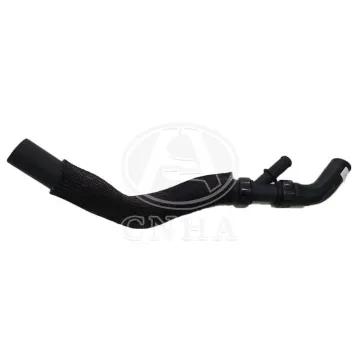Ultimate Guide to Car Radiator Hoses, Heater Hoses & Coolant Hoses
Feb. 28, 2022
If you’ve ever popped the hood of your car, you’ve probably noticed a maze of hoses that wind around the engine. While they don’t look like much, they are like the underground subway of the engine.
It’s the only means of transportation throughout the engine used to transfer fluid to keep the engine cool and some, to warm the air, to keep passengers warm in the winter. Over time car radiator hoses and other vital hoses, which are mostly made of rubber, begin to break down from dry air, heat, and use.
Unfortunately, vehicle manufacturers have not outlined a certain time for when these crucial components should be replaced. That’s why it’s so important to have these hoses inspected often and replaced at the slightest sign of wear, before it’s too late.
Radiator Hose
What Vehicle Hoses Do?
The vehicle’s hoses are the cooling system’s most vulnerable structural component made of flexible rubber composites that handle vibrations from the engine. Hoses are designed to withstand coolant under intense pressure, extreme temperatures, oils, dirt, and sludge.
Hoses degrade from the inside out, which makes detecting their decay difficult. Hoses that continue to degrade develop tiny cracks and pinholes which can lead to ruptures from the pressure, contractions, and exposure to heat.Radiator Hose - When to replace, what does it do
Heater Hose vs. Radiator Hose
Most vehicle cooling systems are comprised of four main hoses.
The upper radiator hose is connected to the thermostat housing and to the radiator. From the bottom of the radiator, is the lower radiator hose that is directed to the water pump. Powered by the vehicle’s water pump, the engine coolant loses its heat after passing through the radiator. Both the upper and lower radiator hoses are the largest hoses in the cooling system connected to the engine.
Radiator Hose
Heater hoses are smaller hoses that are attached to the heater core, which is located under the dashboard, to supply warmth to passengers in the cabin.
If you want to get more information about the difference between the heater hose and radiator hose, welcome to contact us today or request a quote.
Coolant & Overflow Hoses
The vehicle’s thermostat remains closed upon start up until coolant reaches a designated temperature. To prevent coolant from traveling to the radiator for cooling, the fluid is directed back to the engine block, through an externally-mounted bypass hose.
An overflow hose connects to the radiator below the cap and the reservoir tank to store overflow of coolant. As pressures in the cooling system increase due to coolant temperatures, a valve on the radiator cap permits coolant back into the reservoir to help ease the build-up of pressure and prevent coolant loss.Coolant Hose - When to replace and what it does
Preventing Hose Failure
Belt and hose failures can stop you in your tracks. These failures often result in overheating or the loss of power steering or charging system. If a hose begins to leak coolant or the belt turning the water pump detaches, the cooling system will fail and cause overheating. Engine overheating can cause serious internal damages that may lead to costly repairs. What can you do to prevent failure in your vehicle’s hoses:
When the engine is cool, gently squeeze hoses between your thumb and forefinger near each clamp where most degradation occurs. Make note of any mushy or soft areas or any crackling sounds. Good hoses will be firm, pliable, and make no sound.
When the engine is cool, check the coolant level to ensure it is at the proper cold level. If the tank is low, add fluid and check again after a day or so. If fluid is low again, it’s likely a leak has occurred and needs to be checked out by a professional.
Inspect hoses for cracks, divots, bulges, or collapsed areas, oil and coolant contamination, or wearing near connection areas.
Flush coolant every 30,000 miles. Clean coolant is one of the best ways to prevent internal damage to hoses.








